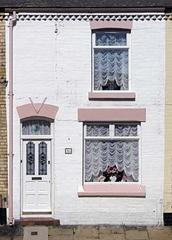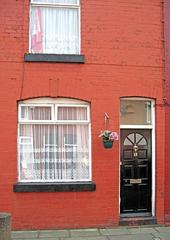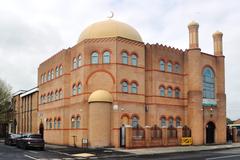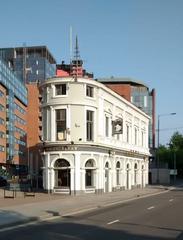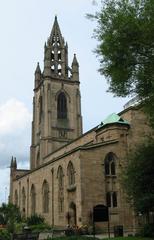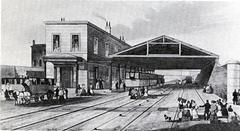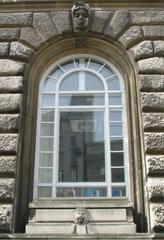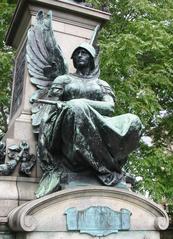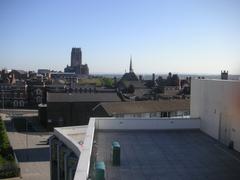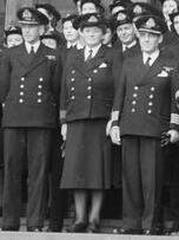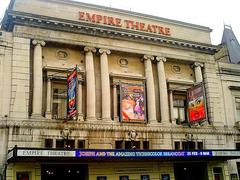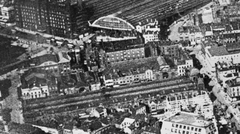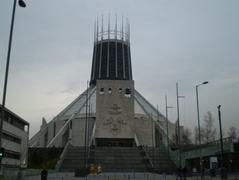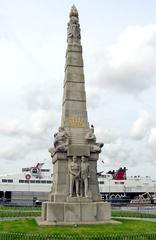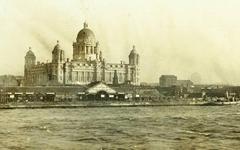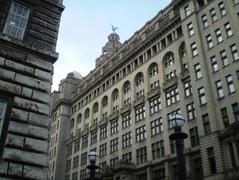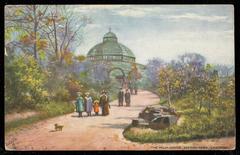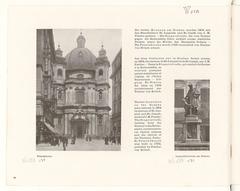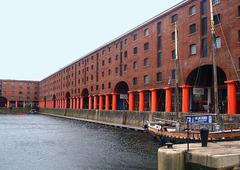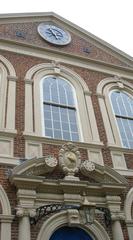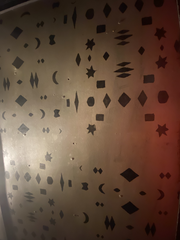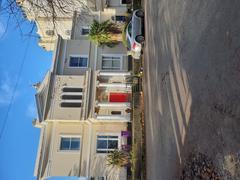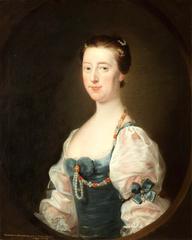Liverpool Women’s Hospital: Visiting Hours, Visitor Information, and Cultural Significance
Date: 04/07/2025
Introduction
Liverpool Women’s Hospital, located in Toxteth, Liverpool, is the United Kingdom’s only standalone specialist hospital dedicated exclusively to women’s health. Since opening in 1995, the hospital has become a leading centre for maternity, gynaecology, reproductive medicine, genetics, and neonatal care, serving Liverpool and the wider North West region. Its origins trace back more than two centuries, evolving from home-based childbirth care to a modern, purpose-built facility officially opened by Diana, Princess of Wales (Liverpool Echo; Liverpool Women’s NHS).
As the largest women’s hospital in Europe, Liverpool Women’s provides care to around 50,000 patients annually. It is recognized for clinical innovation, specialist services, and its deep social and cultural significance in Liverpool. This guide delivers an in-depth overview of the hospital’s history, clinical specialties, visitor information (including up-to-date visiting hours and accessibility), nearby attractions, and its critical role in the city’s healthcare ecosystem (Liverpool Women’s NHS; Wikipedia).
Table of Contents
- Historical Overview
- Clinical Excellence and Research
- Recent Challenges and Future Developments
- Visitor Information
- Frequently Asked Questions (FAQ)
- Summary and Key Tips
- References
Historical Overview
Early Foundations of Women’s Healthcare in Liverpool
Liverpool’s commitment to women’s health began in 1796 with the Ladies’ Charity, which provided home-based childbirth care to married women and widows. This model persisted for nearly 90 years, reflecting the early recognition of women’s distinct healthcare needs (Liverpool Echo).
Institutional Expansion (1846–1895)
In 1846, the city council opened Liverpool’s first lying-in (maternity) hospital on Brownlow Hill, among the earliest of its kind in the UK. The Special Hospital for Women opened in Shaw Street in 1883, broadening services beyond maternity. The Samaritan Hospital for Women followed in 1895, marking growing demand for specialist women’s healthcare (Liverpool Women’s NHS).
Twentieth Century Growth and Unification
1926 saw the opening of Liverpool Maternity Hospital on Oxford Street, then the largest voluntary maternity hospital in Britain. The West Derby Union Workhouse became Mill Road Infirmary, evolving into a specialist site for gynaecology and obstetrics, especially after WWII. In the mid-20th century, these hospitals consolidated administratively, culminating in the Liverpool Obstetrics and Gynaecology Unit in 1985 (Wikipedia).
Purpose-Built Hospital and Modern Era (1995–Present)
In 1995, Liverpool Women’s Hospital opened on Crown Street, unifying services in a landmark facility designed by the Percy Thomas Partnership. The hospital’s entrance is graced by the “Mother and Child” sculpture by Terry McDonald, symbolizing its dedication to women and families (Wikipedia).
The hospital expanded further in 2000 by incorporating the Aintree Centre for Women’s Health, solidifying its status as Europe’s largest women’s hospital. Achieving Foundation Trust status in 2005 enhanced its autonomy and service flexibility (Liverpool Women’s NHS).
Clinical Excellence and Research
Liverpool Women’s Hospital is a leader in reproductive medicine, treating up to 2,500 couples annually for IVF and assisted conception. Its NHS sperm bank and advanced embryology laboratories position it at the forefront of fertility research. The hospital also provides regional specialist neonatal care and genetic services, and participates in pioneering research such as the C-GULL study, which tracks child and family health outcomes (Liverpool Women’s NHS).
Recent Challenges and Future Developments
Despite its achievements, the hospital faces challenges related to its physical separation from acute adult services, occasionally necessitating patient transfers. Financial sustainability is also an ongoing concern, with recurring deficits due to limited economies of scale (Liverpool Women’s Annual Report 2023/24).
To address these, Liverpool Women’s Hospital joined the University Hospitals of Liverpool Group in November 2024, promoting collaboration and sustainability while maintaining its unique identity (University Hospitals of Liverpool). Community advocacy remains strong, especially regarding proposals to relocate services, with groups like Save Liverpool Women’s Hospital campaigning to preserve its specialist focus (Save Liverpool Women’s Hospital Campaign).
Visitor Information
Visiting Hours and Policies
Visiting hours at Liverpool Women’s Hospital are carefully managed to support patient well-being. The typical visiting times are:
- Maternity Wards: Partners/support persons, 11:00 am–8:00 pm; other visitors (including children), 3:00 pm–8:00 pm.
- Gynaecology Wards: 2:00 pm–7:00 pm (max two visitors per bedside).
- Protected Mealtimes (No Visitors): 8:00–8:30 am, 11:45 am–1:00 pm, and 4:30–5:30 pm.
Visiting policies may change due to health alerts or special circumstances. Always confirm the latest details with the hospital or on its visiting times page.
Tickets and Access
General hospital visits do not require tickets. Appointments for medical services must be booked via GP referral or outpatient services. Guided tours and special events (if available) require advance booking.
Directions and Transport
- By Public Transport: Numerous bus routes serve Crown Street from Liverpool city centre and Lime Street Station. Merseyrail offers level boarding and accessible services (VisitLiverpool Accessibility).
- By Car: The hospital is accessible via main ring roads. Parking is available onsite, including disabled spaces; updated charges apply from July 2025 (UHL Group).
- By Taxi: Taxis have a designated drop-off/pick-up zone at the main entrance.
For navigation assistance, consult the Liverpool City Region Visitor Guide.
Accessibility
Liverpool Women’s Hospital is fully accessible, offering wheelchair access, lifts, accessible restrooms, and designated parking. Assistance and interpreter services, including sign language, are available upon request. Navigation apps such as Sociability and Waymap support accessible wayfinding.
Nearby Attractions
Located near Liverpool’s cultural heart, visitors can explore:
- University of Liverpool campus
- Walker Art Gallery
- Museum of Liverpool
- St George’s Hall
- Albert Dock
Combining a hospital visit with local sightseeing offers a fuller Liverpool experience (VisitLiverpool).
Onsite Facilities
- Shops and Café: Refreshements and essentials available onsite.
- Multi-faith Chapel/Quiet Room: For prayer and reflection.
- Patient Information: Leaflets on infection prevention, appointments, and services at the main entrance and online.
Special Events and Visual Resources
Occasionally, guided tours are offered; check the events page for details. Visual resources, including photos and virtual tours, are available on the hospital website.
Frequently Asked Questions (FAQ)
What are Liverpool Women’s Hospital visiting hours?
Refer to the most recent details on the visiting times page. Generally, visiting is 2:00 pm–8:00 pm, but varies by ward.
Are children allowed to visit?
Yes, under supervision. Some wards, such as neonatal, may have restrictions.
Is parking available?
Yes, with charges and disabled spaces. Check current rates before arriving.
Is the hospital accessible for disabled visitors?
Yes. Wheelchair access, lifts, and support services are in place.
Do I need a ticket to visit?
No ticket for general visits; special events require booking.
Can I take a guided tour?
Tours are occasionally available; see the hospital’s events page for booking.
Summary and Key Tips
Liverpool Women’s Hospital embodies over two centuries of women’s healthcare excellence, cultural significance, and community engagement. It offers:
- Advanced maternity, gynaecology, fertility, and neonatal services.
- Accessible facilities and clear visitor guidelines.
- Proximity to Liverpool’s cultural and historical landmarks.
To ensure a smooth visit:
- Confirm visiting hours and policies in advance.
- Use public transport where possible.
- Respect infection control and privacy guidelines.
- Seek assistance if you have specific accessibility or cultural needs.
For real-time updates, download the Audiala app and follow the hospital’s official channels.
References
- Liverpool Women’s NHS Foundation Trust: Our History
- BBC News: Liverpool Women’s Hospital Community Impact
- University Hospitals of Liverpool Group
- Liverpool Women’s NHS Foundation Trust: Visitor Information
- Liverpool Echo: History of Healthcare in Liverpool
- Liverpool Women’s Annual Report 2023/24
- Save Liverpool Women’s Hospital Campaign
- Liverpool City Region Visitor Guide
- UHL Patient Leaflets
- Patient Experience Team
- Liverpool Women’s Equality and Diversity Report, 2022
- Liverpool Women’s Strategy, 2021
- Culture Liverpool, 2020
For the latest updates and resources, visit the Liverpool Women’s Hospital website or the University Hospitals of Liverpool Group.
